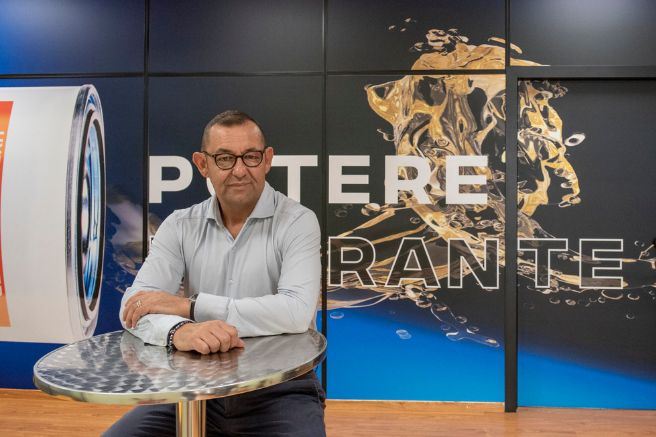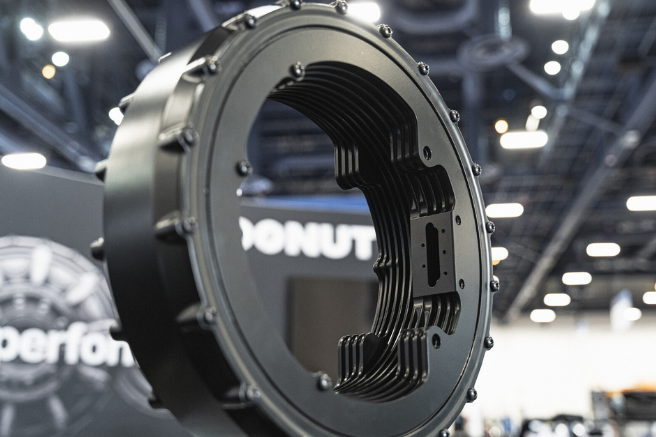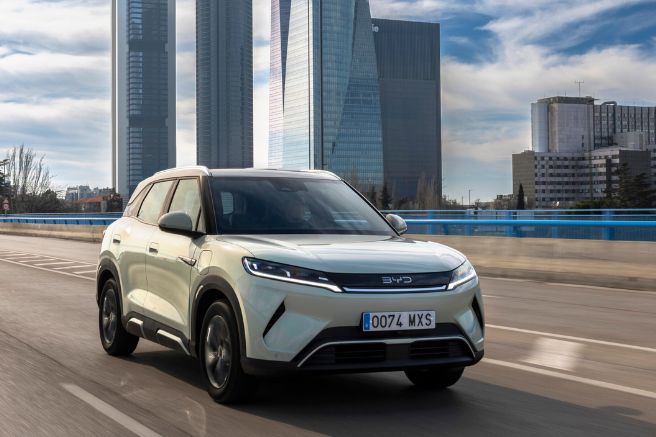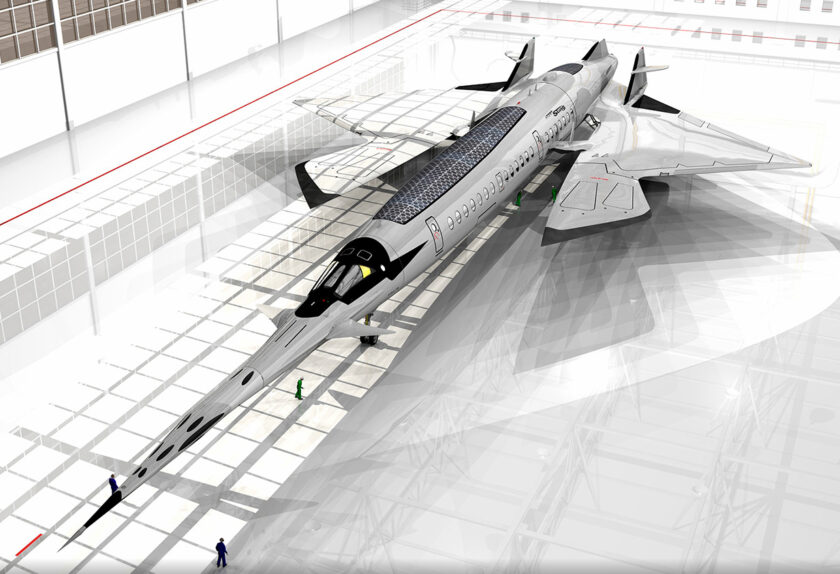
Everyone is talking about it, but no one understands how it works. Some discuss improbable jet engines powered by hydrogen fuel cells, and others talk about plasma jet engines, which are extremely difficult to realize. The fact remains that “Sky Magnetar,” a hypothetical aircraft intended to enable hypersonic flight in the civil aviation sector, designed by Spanish industrial designer Oscar Vinals, has sparked the imagination of all those who, since the retirement of the “Concorde,” have been dreaming of a new era of long-distance air travel at speeds multiple times the speed of sound.
Indeed, there are many projects aiming to reintroduce aircraft capable of supersonic flights—those characterized by speeds exceeding the speed of sound by about 1,200 kilometers per hour—even reaching hypersonic speeds, which correspond to over five times the speed of sound, more than 6,000 kilometers per hour. Such performance would allow an aircraft to cover the distance between London and New York, about 5,760 kilometers, in just 50 minutes, compared to the current eight hours. The problem is that behind these legitimate but also debatable ambitions, there is absolutely nothing, except for bold speculations by designers around the world who revisit the theme every few months, pushing the boundaries of imagination.
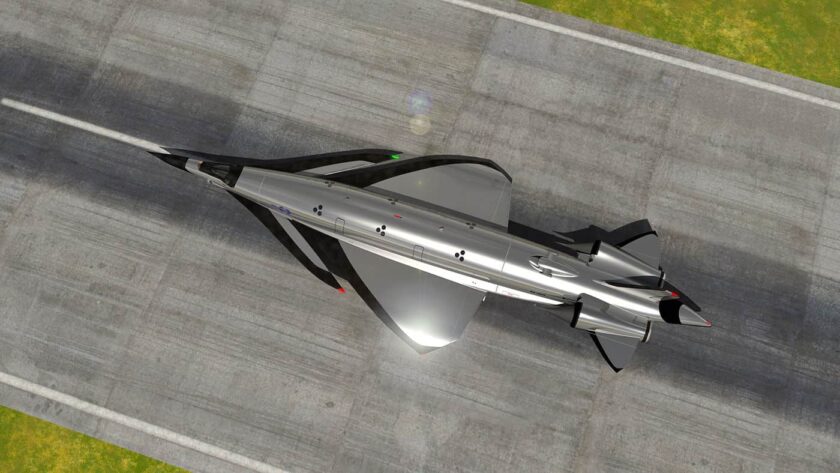
The latest in chronological order is Spanish industrial designer Oscar Vinals, whose passion for aeronautical applications has led him in recent months to engage in bold speculations multiple times. He is, in fact, the creator of projects like “Hyper Sting,” a supersonic aircraft for 170 passengers capable of reaching Mach 3.5 thanks to ramjet engines and hybrid electric turbofan engines powered by a small cold fusion nuclear reactor, or “Sky Ov,” a lifting-body aircraft capable of speeds of Mach 1.5, allegedly using pulse detonation engines, abbreviated as “PDE.”
Recently, it was the turn of the launch of the already mentioned “Sky Magnetar,” a hypersonic aircraft project aimed at covering transatlantic journeys in less than 50 minutes. This is a time shorter than the one recorded in 1974 by the legendary military aircraft Lockheed “SR-71 Blackbird,” which took an hour and 54 minutes, or by the “Concorde” itself, which crossed the Atlantic in two hours and 52 minutes in February 1996.
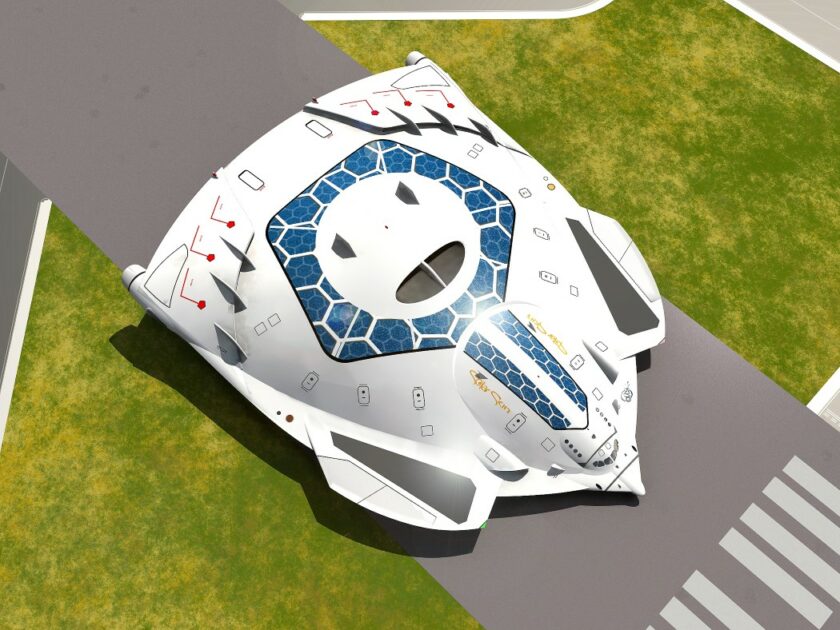
As much as one may be enthusiastic and a positive supporter of technological innovation, it is evident that what many media have presented in recent months as a prototype is merely a paper project whose feasibility remains to be demonstrated. First of all, due to the extremity of its design: 112 meters in length, 39 meters more than an Airbus “A380” but with 50 percent less wingspan, at 42 meters. These solutions are studied to reduce aerodynamic drag and allow hypersonic speeds. To further support the aircraft, six horizontal wing planes are added to the main wings, featuring an ogival delta design with a high sweep angle on the leading edge that tapers towards the outside. This design borrows from the “Concorde” but includes an additional wing solution in the front part of the aircraft, a canard delta architecture with a significant wingspan of 30 meters, which is close to the dimensions of the horizontal tail planes.
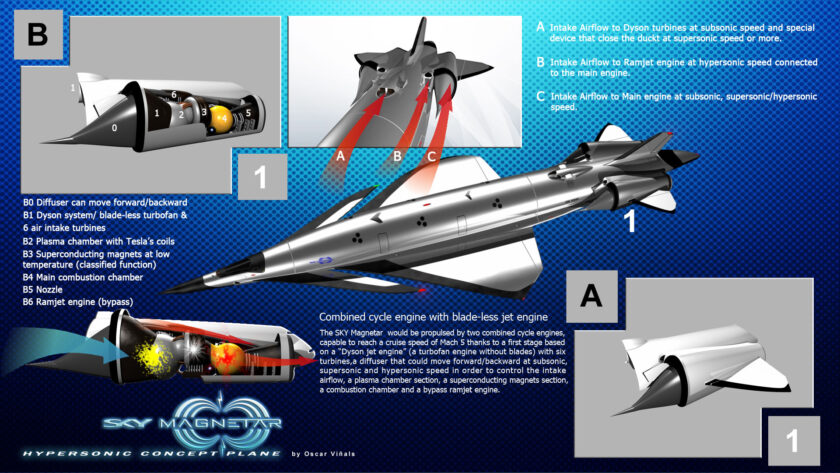
The project also highlights the thermal shields planned for areas most stressed by overheating due to air friction during hypersonic flight, made of ceramic matrix composite materials, and an active cooling system for the fuselage, with the complete absence of windows. Beyond the technical solutions applied, whose feasibility for implementation on a civilian aircraft remains to be demonstrated, the truly interesting element of the entire project is the propulsion system, which applies different technologies.
For subsonic speed regimes, the propulsion relies on a “Dyson” type jet engine, a bladeless turbofan unit powered by six turbines. These are called “Bladeless Jet Engines,” abbreviated as “BJE,” and are engines under study at various aerospace industrial groups, among which General Electric Aviation stands out. In collaboration with the company Dyson, which gives its name to these engines, a project is being developed to equip an electric version of Airbus “A320E” aircraft. Unlike normal propulsion systems, where the air is compressed by the blades of axial compressors, the “BJE” systems exploit the accelerations induced by air vortices in fluid propulsion systems called “FPS,” which, in addition to generating high thrust, should also be quieter, as they have no external moving parts.
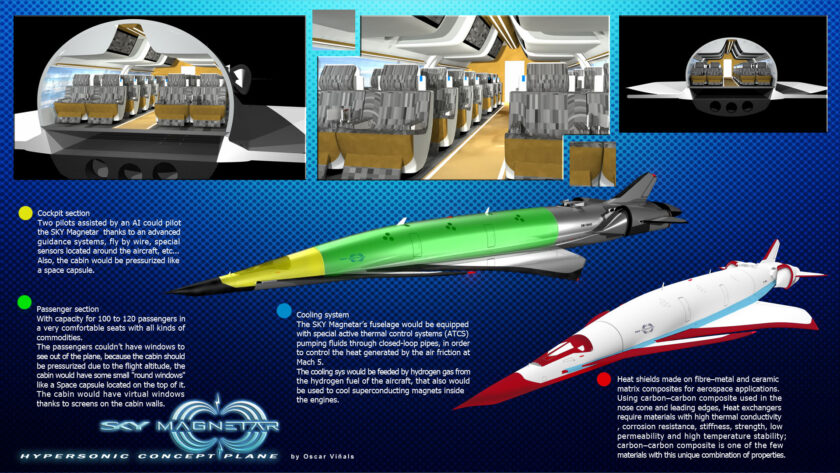
In practice, the unit channels the gas flows generated by the compressor inside hollow ducts through specific nozzles built along the inner surfaces of the ducts themselves. These flows, thanks to the Coanda effect, which ensures the adherence of air along the inner surface of the ducts, create a low-pressure area downstream of the system, due to a change in the section of the duct that is narrower at the outlet edge compared to the inlet edge. The air passing through the duct is consequently accelerated to generate thrust. Moreover, the Coanda effect allows a large amount of air to be channeled inside the duct, minimizing the energy required to perform this work. From this perspective, the fuel consumption, for the same amount of thrust generated, should be 20 percent lower than traditional propulsion systems. A movable diffuser would then keep the speed of the air entering the combustion chamber stable, maintaining consistent processes at various speed regimes.
At hypersonic speeds, however, the aircraft uses an exotic propulsion system that combines a plasma chamber with Tesla coils and superconducting magnets kept at low temperatures, to which it owes the name “Magnetar,” also referring to neutron stars with extremely powerful magnetic fields. The system comes into action in place of the subsonic engines, whose intake ducts are closed when the flight regime becomes supersonic or hypersonic, and it is associated with a ramjet bypass engine—a ramjet that eliminates the passage of air through compressors and turbines, using the speed of the aircraft and the structure of the air intakes to compress the air before passing it into the combustion chamber.
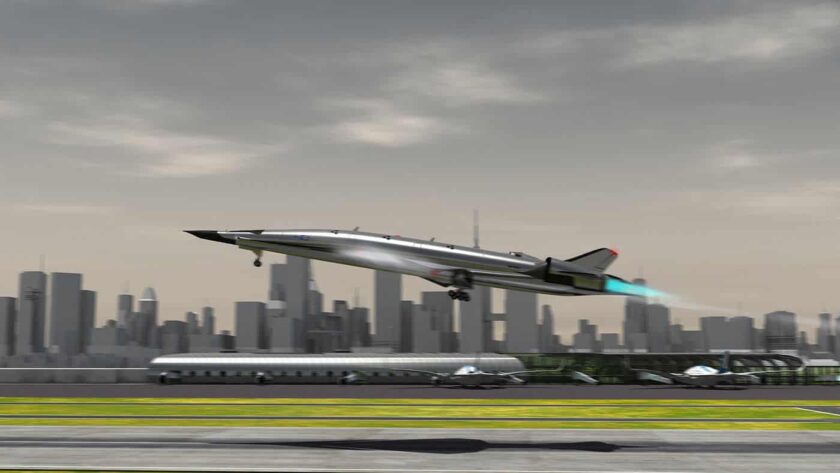
However, how the hypersonic propulsion system designed by Oscar Vinals works has not been disclosed. It could be a system inspired by pulse detonation engines (PDE) or continuous detonation engines, or a plasma propulsion engine that would use intense magnetic fields to accelerate charged particles and create thrust. These systems, however, are still quite unlikely, given the masses to be moved and the relatively low thrust generated. At this point, given the imagination that led the author to hypothesize projects based on the use of small nuclear reactors, one cannot rule out the dream of a fusion engine with electromagnetic confinement of plasma. After all, dreaming is not a crime.
Title: With “Sky Magnetar” dreams are hypersonic
Translation with ChatGPT

